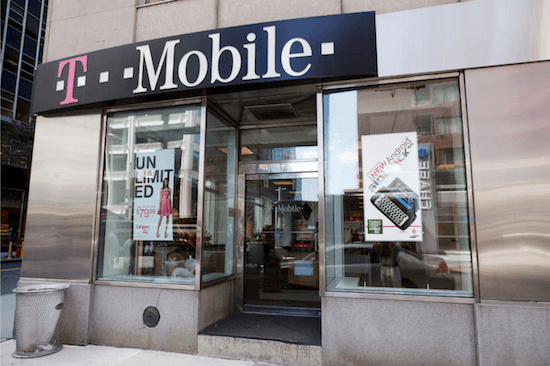
Navy Federal Credit Union (NFCU) is the largest credit union in the U.S. with $165.2 billion in total assets and just over 12 million members.
They offer a full suite of NCUA-insured deposit accounts including CDs (certificates of deposit), money market accounts, savings accounts, checking accounts, and IRAs.
You must, however, have a family member (or household member) that served in any branch of the military to join the credit union. You can learn more about NFCU’s eligibility further below.
To see if NFCU and their deposit accounts are right for you, continue reading our review below.
Navy Federal Credit Union CD Rates + Account Details

Navy Federal Credit Union’s CDs (certificates of deposit) are federally insured by the NCUA up to $250,000 per depositor or $500,000 for joint accounts.
Their most competitive CD is their Special Easy Start CD with a 12 month term and an APY of 5.30%. To earn this yield, however, you must have a linked NFCU checking account and set up a recurring direct deposit of $10 or more per month. There is also a maximum deposit limit of $3,000 for this account.
They also offer 4 additional “Easy Start” CDs that do not require a checking account. All Easy Start CDs come with a minimum deposit requirement of $50 and the ability to add funds over time, but only the 12 month Special EasyStart CD comes with the $3,000 maximum.
CD rates surveyed on September 11, 2023.
Special EasyStart CD Rate
$50 minimum requirement and $3,000 maximum allowance.
| CD Term | APY |
| 12 months* | 5.30% |
EasyStart CD Rates
$50 minimum requirement and no maximum.
| CD Term | APY |
| 6 months | 0.40% |
| 12 months | 4.85% |
| 18 months | 4.45% |
| 24 months | 4.15% |
We should also note that NFCU members may open multiple EasyStart CDs but can only open one of the 12 month special EasyStart CDs per individual.
Standard CD Rates
All of NFCU’s standard CDs require a minimum deposit of $1,000.
| CD Term | APY | APY |
| deposit amount: | $1,000 – $99,999.99 | $100k + |
| 3 months | 4.00% | 4.05% |
| 6 months | 0.45% | 0.50% |
| 12 month | 4.90% | 4.95% |
| 18 months | 4.50% | 4.55% |
| 24 months | 4.20% | 4.25% |
| 3 year | 4.20% | 4.25% |
| 5 year | 4.00% | 4.05% |
| 7 year | 4.00% | 4.05% |
To put these rates in perspective, the current national average for a 12 month CD and a 60 month CD sit at 1.74% and 1.41% APY, respectively, according to FDIC data.
That said, the top yields from online banks and nationally available credit unions are hovering around 5.50% and 4.50% APY for the same respective terms.
How do NFCU’s CD Rates Compare?
Take a look at the 2 tables below. The first compares Navy Federal Credit Union’s best CD rate with some of the best CD rates offered by other large credit unions. The second compares Navy Federal Credit Union’s best CD rate with the top rates offered by various FDIC-insured online banks.
NFCU CD Rates vs Other Credit Unions
| Credit Union | Best CD Rate (APY) |
| Delta Community Credit Union | 5.00% |
| First Tech Credit Union | 5.35% |
| Mountain America Credit Union | 5.50% |
| Navy Federal Credit Union | 4.95% |
NFCU CD Rates vs Online Banks
| Online Bank | Best CD Rate (APY) |
| Ally Bank | 5.00% |
| Capital One | 5.25% |
| Synchrony Bank | 5.25% |
| Navy Federal Credit Union | 4.95% |
How Much Can You Make with a CD from NFCU?
How much money you earn with a Navy Federal Credit Union CD is going to depend on your deposit size, the CD term you choose and its going APY (annual percentage yield). Below is a table displaying earnings from a handful of NFCU’s standard CD accounts assuming a deposit size of $100,000.
| CD Term | APY | Earnings |
| 12 months | 4.95% | $4,950.00 |
| 2 years | 4.25% | $8,680.63 |
| 3 years | 4.25% | $13,299.55 |
| 5 years | 4.05% | $21,958.04 |
Grace Period and Early Withdrawal Fees
Upon the maturity of your Navy Federal Credit Union CD you will be provided with a generous 21 day grace period in which you may modify your CD or close it out. If nothing is done during this period, your CD will automatically renew with the same term and the going APY at that time.
If you need funds prior to your CD’s maturity, you will face an early withdrawal penalty fee. The fee structure is as follows:
- CDs with terms of 12 months or less will be charged fees equal to whichever option costs less: 90 days’ interest or all dividends on the amount withdrawn since issuance/renewal.
- CDs with terms greater than 12 months will cost either 180 days’ interest or all dividends on the amount withdrawn since issuance/renewal and from terms of five years or more will cost 365 days’ interest or all dividends.
Navy Federal Credit Union Money Market Rates + Account Details
Navy Federal money market savings accounts are fine, but you’ll see that they’re not particularly attractive.
Money Market Rates
| Balance | APY |
| $0 – $2,499 | 0.00% |
| $2,500 – $9,999 | 0.95% |
| $10k – $24,999 | 1.06% |
| $25k – $49,999 | 1.10% |
| $50K + | 1.50% |
The current national average for money market accounts sits at just 0.62% APY, however better rates can be had through FDIC-insured online banks which now feature annual percentage yields above the 5.00% mark.
A $2,500 minimum average daily balance is required to earn interest, but you won’t be charged a fee if your balance drops below this. Dividends are compounded and credited monthly. For every transaction you make over the six transaction limits enforced under federal regulation D, you’ll be charged $10.
If you can maintain higher balances in your money market account, you may be eligible for jumbo rates which are slightly better than those listed above. See their jumbo rates below:
Jumbo Money Market Rates
| Balance | APY |
| $0 – $99,999 | 0.25% |
| $100k – $249,999 | 1.65% |
| $250k – $499,999 | 1.85% |
| $500k – $999,999 | 2.05% |
| $1m + | 2.25% |
Other Savings Accounts Offered Through Navy Federal Credit Union
An initial share with Navy Federal costs $5 and gets you a Share Savings Account. This is also how much you’ll need to keep in your savings account. With an APY of 0.25%, this savings product isn’t ideal for growing your money, but it doesn’t come with many inconveniences such as monthly maintenance or low balance fees. It does come with a $3 quarterly inactivity fee if your account is inactive for 12 months during any given quarter. Dividends are compounded and credited monthly.
Navy Federal also offers a SaveFirst Account with an APY of 0.40%. With a slightly better rate of return but equal minimum deposit, this account is a better option for anyone wanting to put money away for designated purposes like weddings or vacations. Select a term between 3 months and 5 years and watch your deposit grow (a little). Dividends are compounded daily and credited monthly. This savings account is going to earn you more than a share savings account, but a money market account might be a better option.
Navy Federal Credit Union Eligibility and History
NFCU was founded in 1933 by Navy Department employees as the Navy Department Employees’ Credit Union of the District of Columbia.
Dropping the unwieldy name and extending membership to all Navy employees worldwide (rather than just those in D.C.), the credit union became known as the Navy Federal Credit Union in 1954.
Fast forward to today and you no longer have to be affiliated with the Navy to become a member of Navy Federal, but you do need to have military ties within your family to join.
To be eligible to join Navy Federal, you must have ties to the Department of Defense, the armed forces, the National Guard, or have a family member that does. Navy, Marines, Army, Air Force, Space Force, and Coast Guard active duty and retired members all qualify for membership. This credit union is not open membership and you may not join if you do not meet the above membership criteria.
The good news is that you don’t have to live near Virginia to access Navy Federal branches or ATMs. There are 350 branches worldwide, some on military bases and some overseas in 26 international locations. In the U.S., Navy Federal has branches in metro D.C., Virginia, California, and Florida. They do not participate in shared branching, but they are part of a network of over 30,000 co-op ATMs.









